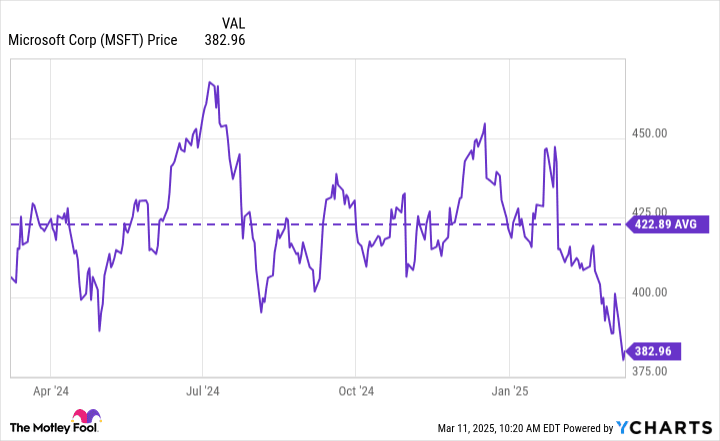The inventory market has gotten off to a really completely different begin to the yr than most buyers may need imagined. The broader benchmark S&P 500 (SNPINDEX: ^GSPC) is down shut to five%, whereas the Nasdaq Composite (NASDAQINDEX: ^IXIC) has entered correction territory (as of March 11). Buyers appear to have overplayed their fingers in believing that President Donald Trump wouldn’t observe by on marketing campaign guarantees to implement sweeping tariffs in opposition to key U.S. buying and selling companions, together with China, Mexico, and Canada. That, coupled with weaker financial information, has stoked issues a couple of recession or perhaps even stagflation.
Whereas the scenario is fluid, many shares have been hit onerous, presenting a possible shopping for alternative. You gained’t consider the inventory that lately hit a 52-year low.
Extra questions than solutions in the case of AI
The factitious intelligence commerce has fueled the current bull market run. Buyers poured into shares tied to AI, which many consider will revolutionize life as we all know it. The “Magnificent Seven” shares, a bunch of tech shares closely believed to be enormous beneficiaries of AI, emerged from this commerce.
Microsoft (NASDAQ: MSFT) is a part of the Magnificent Seven and is likely one of the most vital expertise firms on this planet, with lots of its merchandise powering the enterprise world. Nevertheless, the corporate has did not excite buyers like its friends. The inventory has struggled over the previous yr and is now at a 52-week low and nicely under its 52-week common.

MSFT information by YCharts.
Buyers have been involved about Microsoft’s future with AI, and so they’re attempting to evaluate what the return on the corporate’s heavy investments will likely be and when they may materialize. This is a matter many firms investing in AI are coping with. Microsoft has vowed to spend $80 billion on AI this yr, however is doing so whereas the corporate has struggled in different areas.
Gross revenue margins on the firm declined over the previous yr, however are nonetheless nicely above 60%. In its most up-to-date quarterly earnings report, Microsoft beat Wall Avenue analyst estimates on earnings per share and income, however noticed weaker progress than anticipated in its Azure cloud enterprise. The corporate additionally issued weaker steerage than anticipated for the present quarter.
The cloud enterprise is meant to reap advantages from AI, so buyers have been dissatisfied by the outcomes. On Microsoft’s most up-to-date earnings name, administration mentioned that AI income surpassed $13 billion and exceeded their expectations. Administration additionally attributed weak point in its cloud enterprise to non-AI companies, which got here in under administration’s expectations.
Microsoft will discover a manner
Regardless of questions on AI capital expenditures, analysts are nonetheless bullish on the corporate. Of the 31 analysts which have issued a analysis report on Microsoft over the previous three months, 28 price the corporate a purchase and three say maintain, in accordance with TipRanks. The common value goal implies 34% upside from present ranges.
Within the close to time period, the proof will likely be within the pudding concerning whether or not Microsoft can produce tangible outcomes from all its AI spending. Nevertheless, in the long run, I count on the corporate to learn, given its monitor file of innovation and all of the assets at its disposal. Microsoft has great income variety inside expertise, from its cloud enterprise to social media to gaming to its suite of workplace merchandise. I see this as a core benefit of the corporate that will likely be onerous for friends to copy.
Moreover, Microsoft is likely one of the few firms that has a greater credit standing than the U.S. authorities, so buyers shouldn’t have to fret about its sturdiness. For its fiscal yr 2025, analysts count on Microsoft to generate $48 billion of free money move. The corporate’s ahead price-to-earnings ratio is 28.7, which is under its five-year common of about 30.5. buyers can take benefit and purchase the dip.


